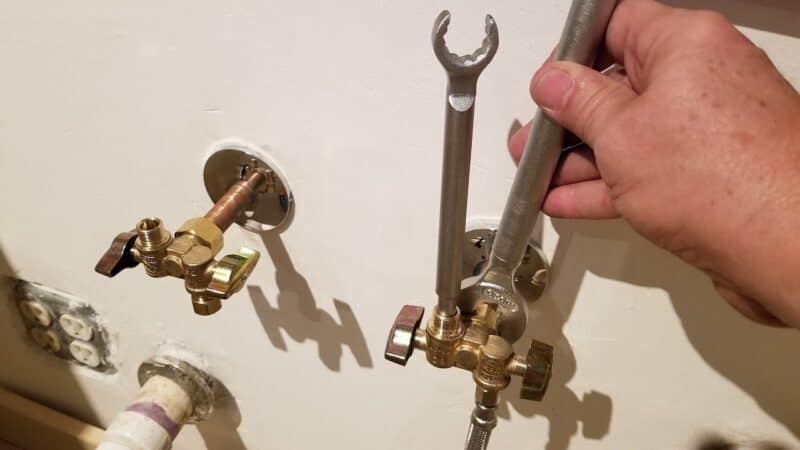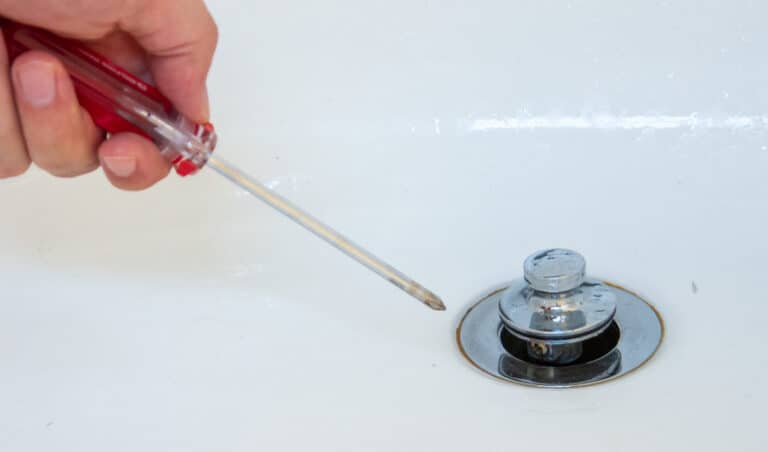10 Different Types of Sink Shut off Valves

Are you trying to figure out how to fix or install a sink? Before you get started, find out about the types of sink shut-off valves and save yourself the extra trips to the hardware store and the hassle of returning an incorrect purchase of the wrong type of valve. Here are 10 different types of sink shut off valves.
1. Straight Shut Off Valve
A shut-off is used to turn the flow of water off or on. Most homes have a main shut-off valve controlling the entire house’s water supply. This valve is usually located near the water meter or where the water line comes into the house. There are also shut-off valves for individual fixtures, such as toilets, sinks, and showers. These valves are usually located under the fixtures or behind the wall. Shut-off valves work by blocking or allowing water to flow through a pipe. They are typically operated by a handle that is turned to open or close the valve. Water can flow through the valve and into the pipe when the handle is in the open position. When the handle is closed, water cannot flow through the valve. It will be redirected back to the main water supply line. Shut-off valves are a vital component in any plumbing system. They are used to control the flow of water in both residential and commercial settings.
2. Angle Stop Valve
An angle stop valve is a type of shut-off valve with the inlet and outlet of the valve positioned at a 90° angle. They are usually found where water lines extend out from a wall. They are used to control the water flow to plumbing fixtures and appliances like laundry machines. The valve is installed where the water supply line enters the room and is usually located near the fixtures themselves. The angle stop valve consists of a handle, a stem, and a seat. Turn the handle to align with the hot or cold water supply line to move the stem into position to block or allow water to flow through the seat to turn the water on or off. When closed, the angle stop valve creates a seal that prevents water from leaking through.
3. Ball Valve
A ball valve consists of a ball inside a cylinder. When you turn the lever to the “on” position, the ball rotates to align with the flow of the water, allowing the water to flow through the valve. When you turn the lever to the “off” position, the ball turns so that it blocks the flow of water, preventing water from flowing through the valve and into the sink. Ball valves are simple to use and require very little maintenance. As a result, they are a popular choice for many homeowners.
4. Push Fit Stop Valve
A push-fit stop valve is a plumbing valve used to control the flow of water in a piping system. It is composed of a rubber or plastic O-ring filled with metal spurs that grip around the pipe to create a reliable seal. To operate the valve, the handle is turned to loosen the valve’s grip, allowing water to pass through the valve and into the fixture. When the handle is turned to the “off” position, the valve tightens, and water flow is restricted or shut off completely. According to PlumbingNav.com, push-fit stop valves are easy to install and require no soldering or special skills. They are commonly used in residential applications such as kitchens and bathrooms.
5. Compression Shut Off Valve
Water flows from the pipes and into the basin when you turn on the sink. But how does it know when to stop? That’s where the compression shut-off valve comes in. This valve is often located under the sink and controls water flow to the faucet. When you turn on the water, the handle lifts a rubber washer off the seat, allowing water to flow through. As you turn the handle, a metal screw presses down on the washer, compressing it and creating a tighter seal, shutting off the flow of water.
6. CPVC Shut Off Valve
A CPVC stop valve is a type of valve used to control the flow of water in a piping system. The valve consists of a body with two ports, an inlet, an outlet, and a shut-off mechanism operated by a handle. The shut-off mechanism allows the valve to be closed entirely or “stopped” so no water can flow through the valve. CPVC stop valves are commonly used in residential and light commercial applications, such as healthcare facilities, office buildings, and hotels. CPVC stop valves are available in a variety of sizes and configurations to meet the needs of different piping systems.
7. PEX Shut Off Valve
According to Plumbing Lab, PEX shut-off valves are designed for use with PEX piping; a non-oxygen barrier PEX is simply PEX without any oxygen. PEX shut-off valves are also often used to control water flow to individual fixtures, such as toilets and sinks. They are installed at the main water supply line to the home and can be used to shut off the water supply in the event of a leak or other emergency. PEX shut-off valves work using a lever or handle to close the water flow through the valve. The lever or handle is connected to a metal rod that runs through the center of the valve. When you turn the lever or handle, the metal rod moves and blocks the water flowing through the valve.
8. Sweat Shut Off Valve
A sweat shut-off valve is made of a corrosion-resistant material, such as copper. You can often find the sweat shut-off valve in the water line before the water heater. You simply turn the handle open or close the valve. According to Home Repair Doctors, a sweat shut-off valve requires soldering to install.
9. Iron Pipe Shut Off Valve
An Iron Pipe Stop (IPS) Valve is designed to be installed at the main water supply line. These valves can be helpful when you need to shut off the water supply to your home or business, such as during a repair or replacement project. The IPS valve is also used in irrigation systems to control water flow to different parts of a property. You can direct water to where it is needed most by opening or closing the valve. For example, you may want to open the valve to provide water to a lawn during a dry spell, or you may need to close it off if there is a problem with the irrigation system.
In addition to controlling the water flow, an IPS valve can also regulate pressure in a piping system. By adjusting the handle on the valve, you can increase or decrease the amount of pressure in the system, which can be helpful if you are experiencing low water pressure or trying to avoid damage to your pipes. You can find instructions on how to install an iron pipe stop valve here.
10. Specialty Shut Off Valves
According to Plumber University, there are many different types of specialty shut-off valves, each with its own specific purpose. Anyone can use them for sinks and other residential and commercial fixtures.
Specialty shut-off valves include:
- Zone valves are often found in hydronic heating systems.
- Backflow prevention valves are devices installed in water lines to prevent contaminated water from flowing back into the clean water supply. These valves are usually installed where the water line connects to the main water supply, and they work by automatically closing when the water pressure drops below a certain level, preventing contaminated water from being drawn back into the clean water supply. They can also help to prevent flooding in the event of a pipe break or other problems with the water line.
- Check valves are used in many industrial applications, such as oil and gas production. They help to ensure that the flow of fluids is always moving in the correct direction. There are several different kinds of check valves, each designed for specific applications. However, all check valves share the same primary function: to control the flow of fluids.
- Pressure-reducing valves control the water pressure.
You can also read:


